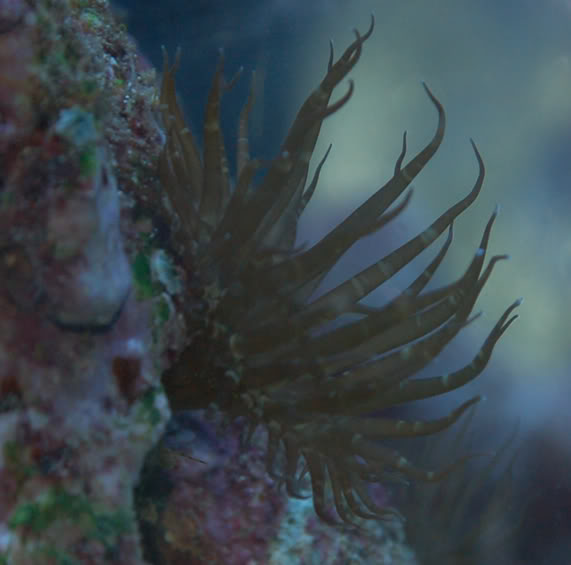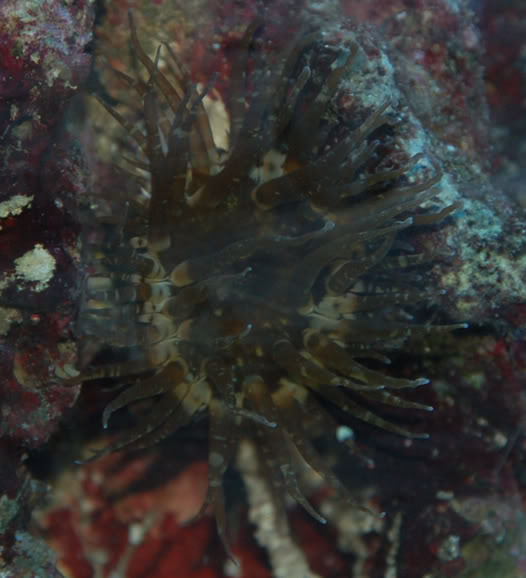You are using an out of date browser. It may not display this or other websites correctly.
You should upgrade or use an alternative browser.
You should upgrade or use an alternative browser.
Aiptasia?
- Thread starter robertfah
- Start date
The friendliest place on the web for anyone with an interest in aquariums or fish keeping!
If you have answers, please help by responding to the unanswered posts.
If you have answers, please help by responding to the unanswered posts.
mr_X
Aquarium Advice Addict
yep. that's them.
Kurt_Nelson
Aquarium Advice Addict
And a mighty fine specimen too, I might add!
And a mighty fine specimen too, I might add!
austinsdad
Aquarium Advice Addict
You heard right.
Kurt_Nelson
Aquarium Advice Addict
I heard these weren't good for tanks and I should do my best to remove them.
Sorry... my comment didn't come out quite right via the interweb! Yes... you should kill it off. I only meant that it was one of the nicer pictures I've seen of one, and it's a nice big, plump one. But still a nuisance...
eric faatz
Aquarium Advice Freak
joes juice is a good remover
Ah, now I understand.....thanks!Sorry... my comment didn't come out quite right via the interweb! Yes... you should kill it off. I only meant that it was one of the nicer pictures I've seen of one, and it's a nice big, plump one. But still a nuisance...
Yes, I've heard this as well.joes juice is a good remover
ROFL.....trust me, if it gets to it, I read somewhere that someone took a soldering iron to there LR and it worked like a charm.....smelt like crap, but those buggers never came back!A flame thrower works too.
Grug
Aquarium Advice Regular
have been fighting the good fight on another thread for the last 2 weeks.. Aptasia X works.. but for one like that.. (i had one a little smaller but still 2 inches tall) it takes a couple of doses.. dont be afraid to really squeeze that applicator.. 
During a re design tonight i took a knife and a lighter to the bigger ones.. watch yourself.. the big ones will quite happily spit what feels like acid in your eyes.
During a re design tonight i took a knife and a lighter to the bigger ones.. watch yourself.. the big ones will quite happily spit what feels like acid in your eyes.
mr_X
Aquarium Advice Addict
that's called "salt water"...lol.the big ones will quite happily spit what feels like acid in your eyes.
Well I hit them with a needle and lemon juice a couple of nights ago. I can tell the ones I missed as they are still showing up and the ones that I hit, they are all wilted and shriveld up! I did as the website recommended; inject 1ml of lemon juice into the STEM of the aiptasia and don't do too many at once.
So in a couple of days I will hit them again and then do a water change, but so far so good. The only real issue with this approach is trying to get the needle at the right angle to hit the stem, without poking yourself with the needle!
So in a couple of days I will hit them again and then do a water change, but so far so good. The only real issue with this approach is trying to get the needle at the right angle to hit the stem, without poking yourself with the needle!
Jimbo7
Aquarium Advice Addict
Haha I like the soldering iron. If they are in a crevice or hole, just get them to shrink in and then cover it with a couple dabs of super glue. Life sentence.
Deep Seven
Aquarium Advice Addict
Maybe.that's called "salt water"...lol.
Aiptasia
Cnidocytes contain an explosive organelle, the cnida, which, upon proper stimulation, inverts and ejects a slender, often barbed and toxic thread in the direction of prey or predator (Fig 7-9). Three types of cnidae are found in cnidarians (Fig 7-10). Nematocysts (in nematocytes), spirocysts (in spirocytes), and ptychocysts (in ptychocytes). All toxic cnidae are nematocysts whereas spirocysts are sticky, and the everted tubules of ptychocysts are used for constructing feltlike tubes. Most cnidae are nematocysts and these are present in all three higher cnidarian taxa. Spirocysts and ptychocysts are found only in Anthozoa.
The above paragraph is from Landers University website on aiptasia. Not sure if this is was Grug was referring to or not, but aiptasia can fire a projectile to sting predators and prey with.
Jimbo7
Aquarium Advice Addict
nooo waaaay. I'm thinking underground Aiptasia fight ring..
maybe.
aiptasia
cnidocytes contain an explosive organelle, the cnida, which, upon proper stimulation, inverts and ejects a slender, often barbed and toxic thread in the direction of prey or predator (fig 7-9). Three types of cnidae are found in cnidarians (fig 7-10). Nematocysts (in nematocytes), spirocysts (in spirocytes), and ptychocysts (in ptychocytes). All toxic cnidae are nematocysts whereas spirocysts are sticky, and the everted tubules of ptychocysts are used for constructing feltlike tubes. Most cnidae are nematocysts and these are present in all three higher cnidarian taxa. Spirocysts and ptychocysts are found only in anthozoa.
the above paragraph is from landers university website on aiptasia. Not sure if this is was grug was referring to or not, but aiptasia can fire a projectile to sting predators and prey with.
yikes 8-O
wow some good ways to fight these off I am going to try several ways, there is an aiptasia eating nudibranc, a copper banded butterfly and some arrow crabs and even peppermint shrimp may work.
I will do the soldering iron as well seems like a better way all the chemical attempts are not that sucessful
I will do the soldering iron as well seems like a better way all the chemical attempts are not that sucessful
Last edited by a moderator:
wow some good ways to fight these off I am going to try several ways, there is an aiptasia eating nudibranc, a copper banded butterfly and some arrow crabs and even peppermint shrimp may work.
I will do the soldering iron as well seems like a better way all the chemical attempts are not that sucessful
John Jay
Jacksonville Fl
Aquariums by John
johnsreefs.com
I have 4 pepermint shrimp in my tank....1 of which sits right next to a piece of aiptasia but he doesn't touch it. Maybe over time they will, but I went with the needle route to try to nip it in the butt before it gets out of hand.
Jimbo7
Aquarium Advice Addict
Peppermint Shrimp Imposters in Saltwater Aquaria: Lysmata wurdemanni is the Real Aiptasia-Eater for the Reef Tank
All fish and invert solutions are a hit or miss depending on what age they were caught and how long they have been in captivity.
Never get the berghia nudis. Once they eat all your aiptasia, they are going to starve and die, its cruel.
All fish and invert solutions are a hit or miss depending on what age they were caught and how long they have been in captivity.
Never get the berghia nudis. Once they eat all your aiptasia, they are going to starve and die, its cruel.
mr_X
Aquarium Advice Addict
interesting read. do you think this means it can actually launch a projectile, or that it leaves something in the flesh of what touches it, sort of like a bristle worm would?Maybe.
Aiptasia
Cnidocytes contain an explosive organelle, the cnida, which, upon proper stimulation, inverts and ejects a slender, often barbed and toxic thread in the direction of prey or predator (Fig 7-9). Three types of cnidae are found in cnidarians (Fig 7-10). Nematocysts (in nematocytes), spirocysts (in spirocytes), and ptychocysts (in ptychocytes). All toxic cnidae are nematocysts whereas spirocysts are sticky, and the everted tubules of ptychocysts are used for constructing feltlike tubes. Most cnidae are nematocysts and these are present in all three higher cnidarian taxa. Spirocysts and ptychocysts are found only in Anthozoa.
The above paragraph is from Landers University website on aiptasia. Not sure if this is was Grug was referring to or not, but aiptasia can fire a projectile to sting predators and prey with.
Similar threads
- Replies
- 2
- Views
- 871
- Replies
- 3
- Views
- 171
Latest posts
-
-
-
-
-
-
-
-
Cycling with the use of api quickstart
- Latest: Aiken Drum
-


